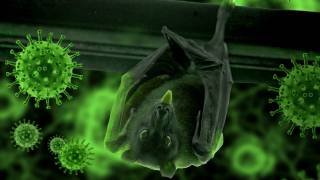Coronavirus Cases Spread Between Humans During 2019

A recent article concluded that there have been human-to-human transmissions of the 2019-nCoV among close contacts in China since the middle of December 2019.
Published in The New England Journal of Medicine the article which was updated on January 31, 2020, these researchers found that ‘since the middle of December 2019, the novel coronavirus spread out gradually in China.’
And, contrary to media reports, as of December 29, 2019, the actual number of novel coronavirus infected pneumonia (NCIP) of cases has been doubling in size approximately every 7.4 days in Wuhan, China.
Furthermore, this study team estimated that on average, each infected patient has spread the 2019-nCoV infection to 2.2 other people.
And, the epidemiology team found that while the majority of the initial 2019-nCoV cases reported were related to exposures at the Huanan Seafood Wholesale Market located in Wuhan, there was an exponential increase in unrelated cases identified by late December 2019.
In 10 closely examined confirmed cases, the mean incubation period was estimated to be 5.2 days.
“Our preliminary estimate of the incubation period distribution provides important evidence to support a 14-day medical observation period or quarantine for exposed persons,” the report authors wrote.
The evidence for these findings was obtained from local health authorities and the National Institute for Viral Disease Control and Prevention, a division of the Chinese Center for Disease Control and Prevention.
Additionally, the Chinese Center for Disease Control and Prevention epidemiology teams acquired data through interviews of infected persons, relatives, health care workers, and close contacts.
The first US case of 2019-nCoV occurred in an individual who had traveled to Wuhan and was asymptomatic when arriving back in the United States.
Since then, the US Centers for Disease Control and Prevention (CDC) has officially confirmed 11 cases in the USA, including 2 human-to-human cases, as of February 5, 2020.
“Future studies could include forecasts of the epidemic dynamics and special studies of person-to-person transmission in households or other locations, and serosurveys to determine the incidence of the subclinical infections would be valuable,” the authors concluded.
This study was supported by the Ministry of Science and Technology of China, the National Science and Technology Major Projects of China (2018ZX10201-002-008-002, 2018ZX10101002-003), the China–U.S. Collaborative Program on Emerging and Re-emerging Infectious Disease, and National Mega-Projects for Infectious Disease (2018ZX10201002-008-002), the National Natural Science Foundation (71934002), the National Institute of Allergy and Infectious Diseases contract number HHSN272201400006C), and the Health and Medical Research Fund.
None of the funders had any role in the study design and the collection, analysis, and interpretation of data or in the writing of the article and the decision to submit it for publication. These researchers confirm their independence from funders and sponsors.
The views expressed in this article are those of the authors and do not represent the official policy of the China CDC.
Coronavirus outbreak news published by Coronavirus Today.








.jpg)

.jpg)




.jpg)







.jpg)
